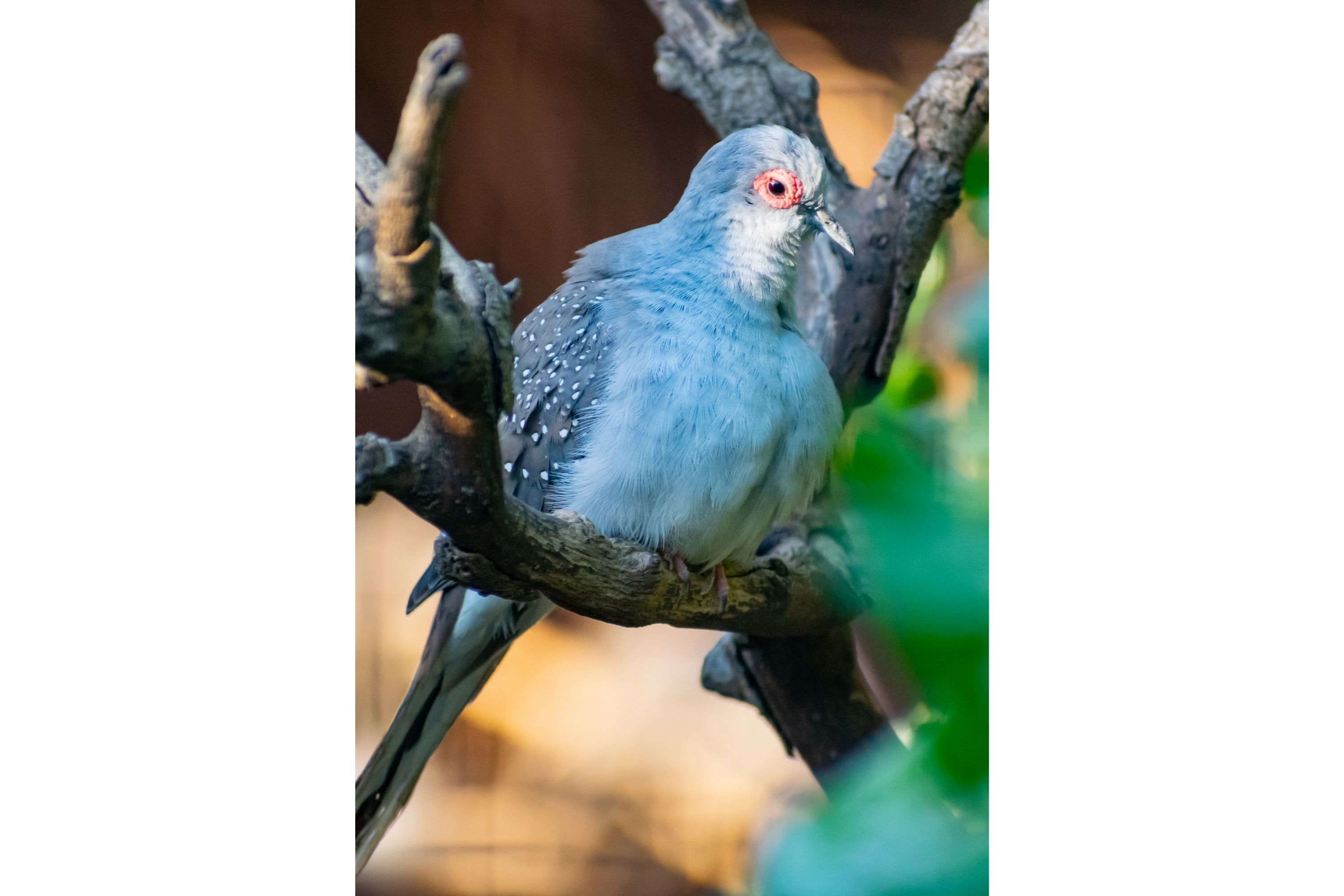Diamond dove
(Geopelia cuneata)

Description
The diamond dove (Geopelia cuneata) is a resident bird in Australia. The dove predominantly exists in areas near water but which are lightly arid or semi-arid in nature, being Central, West and Northern Australia. They are one of Australia's smallest pigeons along with the peaceful dove. They have been spotted occasionally in Southern Australia in parks and gardens when the centre of Australia is very dry. They are small pigeons with a length of 19 to 21 centimeters or 9 to 11 inches. Regardless of sex, they have white spots and black edges on their wings, red eyes and orange eye-rings. The sexes look similar except the female's eye ring is less vivid and has more of a brown colour to the plumage. The male's head, neck, and breast are light blue-grey. The bill is a dark grey colour. The abdomen is a creamy colour while the back and tail is a brown-grey colour. The legs and feet are pink. The juveniles have a light grey bill; the iris and eye ring is fawn in colour; the feet and legs are grey; the breast is grey and does not possess any white spots on their wings. Regardless of its astoundingly small size (weighing only about 35 g), it has a great tolerance to high heat levels due to adaptations in body temperature, metabolism, respiration, water balance, and behaviour. he diamond dove is often seen on the ground, where it runs with a waddling gait. Its flight is strong, direct, and sometimes undulating. The wings can make a whistling "frrr" noise when flying. Diamond doves tend to be seen in pairs or small groups feeding off the ground. They feed off seed mostly from grasses. They will also eat ants. The doves tend to breed after rain but mostly in spring in Southern Australia. Nests are usually built from interwoven grasses and/or twigs, and are fragile in construction. Two white eggs are usually laid and incubated for 13 to 14 days. Their chicks are fast to grow, and are usually fully feathered and flying by two weeks. They are known to have a variety of calls. The calls sound mournful, slow and have a soft, pleasant falsetto quality to them. Two calls consist of two long coos followed by a pause and then a long, short and long coo. Sometimes they call two long coos. The alarm coo consists of a few short but loud coos.
Taxonomic tree:







